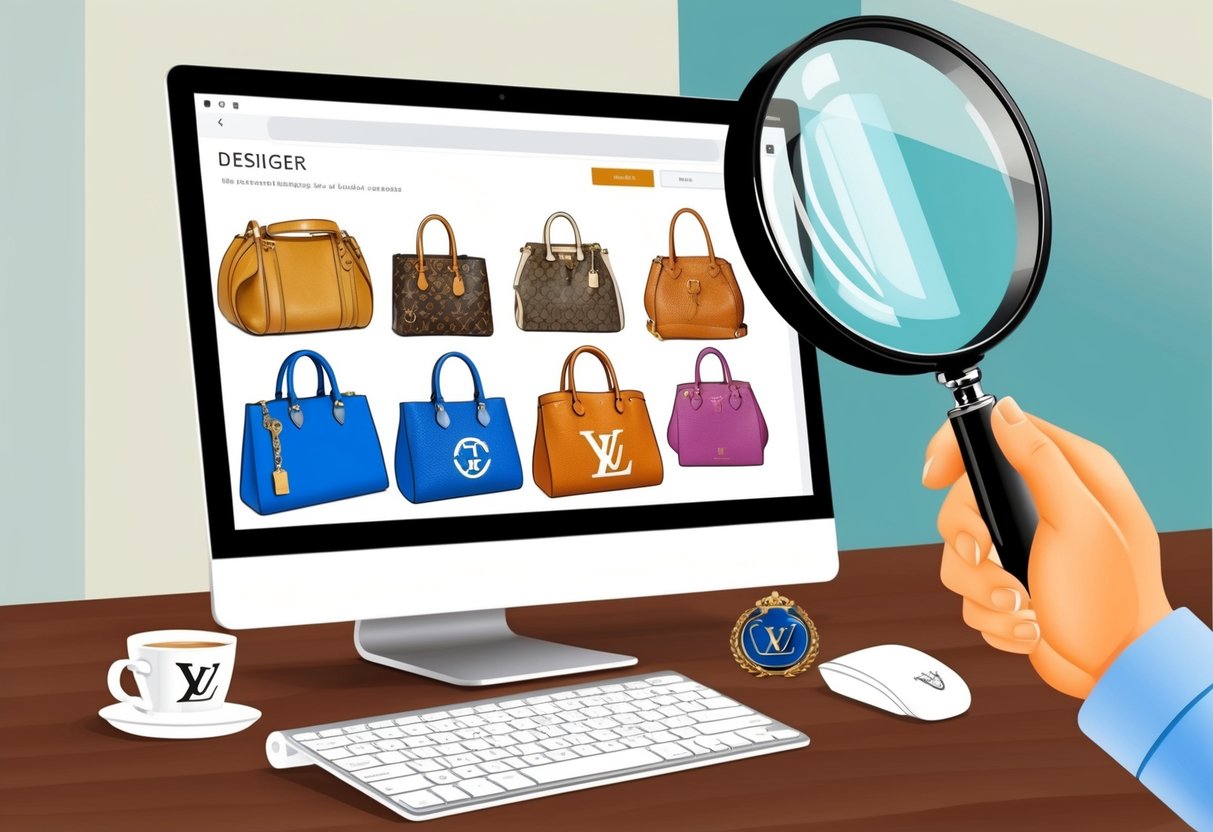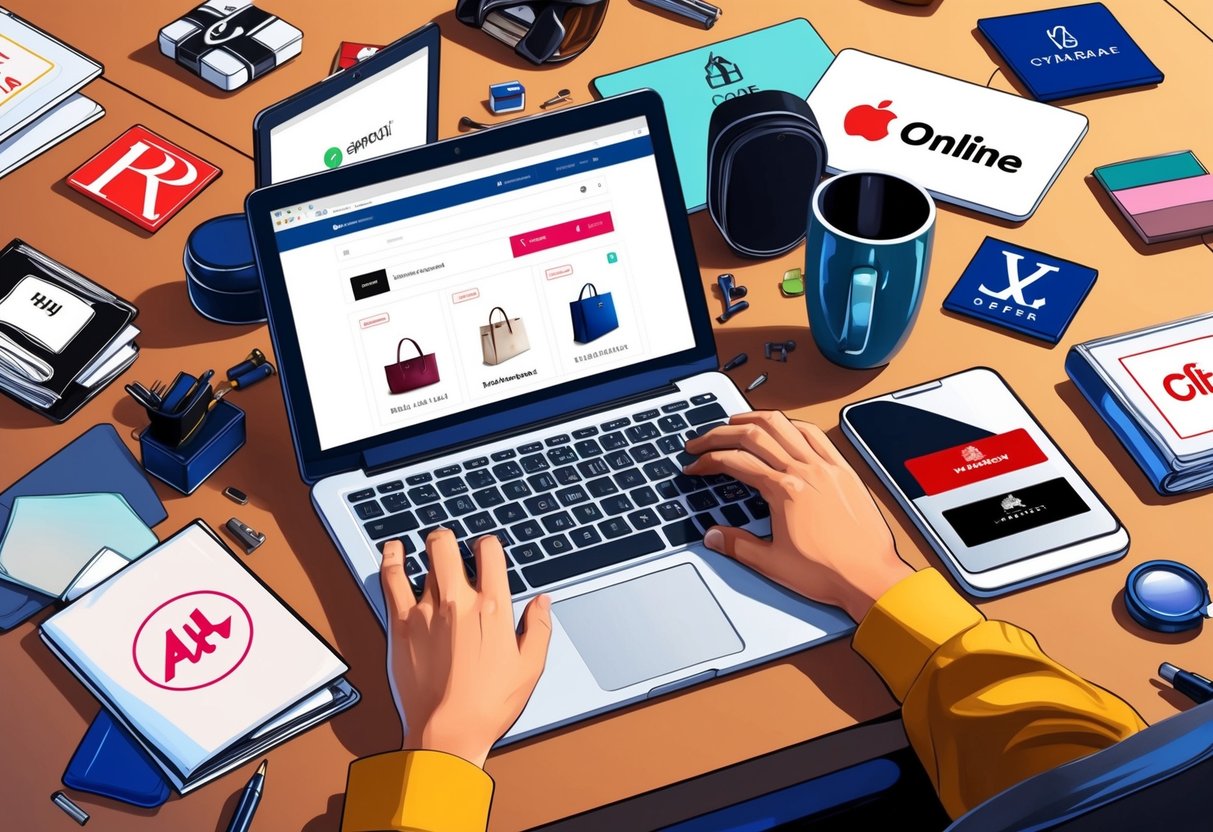
Examining the Details: How to Authenticate Designer Products
Authenticating designer apparel online requires paying close attention to elements like construction, label details, and embedded security features. Small irregularities in workmanship or branding often indicate counterfeit products that may look similar to the untrained eye.
Material and Workmanship
Luxury brands consistently use high-grade materials chosen for durability, texture, and feel. Genuine designer items rarely feature fabric that feels thin, overly stiff, or plasticky.
Leather goods should be supple, evenly grained, and free from chemical smells. Fabrics such as silk, cashmere, and wool from renowned brands exhibit a consistent weave and a premium finish.
Apparel made by designers will have neat hems, clean lining, and secure, weighty hardware. Zippers move smoothly and are usually sourced from reputable manufacturers like YKK or Lampo.
Shoddy clasps, peeling coating, and uneven buttons are common red flags for counterfeit products.
Serial Numbers and Holograms
Many designer brands add security features such as unique serial numbers, QR codes, or hologram stickers to verify authenticity. These codes are frequently found in discreet locations inside the clothing or accessory, such as inner pockets or near the care tags.
Authentic items typically have crisp, perfectly printed codes, whereas fakes may have blurred numbers, inconsistent fonts, or weak holograms. Some retailers or luxury authentication services allow buyers to check codes online for added confidence.
Learning where and how a brand places these identifiers—such as embossed serial patches in handbags—is essential to avoiding fakes. More tips on checking security features can be found in guides on how to authenticate designer clothes.
Brand Logos and Label Placement
Carefully inspecting logos is one of the most effective ways to spot fake designer brands. Counterfeit apparel and accessories often use flawed print, incorrect fonts, or uneven embroidery.
Authentic designer items maintain strict standards for logo replication and positioning. Labels should precisely match font style, size, and stitching style across genuine products.
Official tags rarely have spelling errors, smudged ink, or misaligned text. Consistency in logo placement and labeling is found across the brand’s collection and is well-documented in online resources.
Paying attention to these subtle but important differences helps to distinguish real items from imitations, as explained in advice for identifying fake vs. original designer items.
Quality of Stitching and Finishing
The level of detail in stitching and overall finishing is a reliable authenticity indicator. Designer goods will display even, dense stitches with no loose threads or inconsistent spacing.
Stitch lines should be perfectly straight and symmetrical, whether on garment seams, bag handles, or shoe edges. In contrast, counterfeit products tend to cut corners: loose strands, bunching, and mismatched thread colors are frequent issues.
Finished edges are often raw or poorly hemmed in fakes. Photographs of authentic items often reveal double- or even triple-stitched seams, reinforcing designer craftsmanship.
Familiarity with these finishing techniques is crucial for anyone shopping for genuine designer apparel online, as noted by experts in verifying branded clothes authenticity.
Spotting Fakes on Popular Online Platforms

Counterfeit designer goods are widespread on major e-commerce sites and social media marketplaces. Buyers can protect themselves by using proven techniques and tools to detect suspicious products, seller tactics, and fraudulent listings.
How to Identify Counterfeits on Amazon
Amazon’s marketplace features both authorized retailers and third-party sellers, making verification crucial. Buyers should check for the “Ships from and sold by Amazon.com” label and prioritize items with this designation.
Be wary of unusually low prices, vague descriptions, or missing manufacturer details. Counterfeiters often duplicate popular listings, so compare product images and packaging details with images from official brand websites.
Tools like Fakespot can help analyze product reviews and seller reputation for suspicious patterns. Scrutinize the quality of customer photos, as authentic products are more likely to garner detailed, legitimate reviews.
Avoid listings with poor grammar, misspelled brand names, or inconsistent labeling.
Avoiding Fakes on eBay
eBay’s auction and buy-it-now formats attract many resellers, which increases the risk of encountering counterfeits. Always review seller feedback history, looking for high positive ratings and a track record of selling authentic items.
Request original receipts, serial numbers, or manufacturer certificates when possible. Pay close attention to listing details: genuine designer goods usually have specific model numbers, high-quality photographs, and transparent return policies.
Use eBay’s authenticity guarantee categories when shopping for luxury brands. If a deal seems unusually good, compare it to other listings and the brand’s official pricing to spot potential red flags.
As outlined by Business Insider, damaged packaging, inconsistent logos, or unclear seller information can indicate counterfeit goods.
Risks of Buying from Social Media Platforms
Social media platforms such as Instagram, Facebook Marketplace, and TikTok Shop are increasingly used to sell counterfeit designer brands. Many counterfeit sellers use professional-looking ads, influencer endorsements, and direct messaging to build trust and evade detection.
Verify business accounts, check for genuine customer reviews, and examine product images for inconsistencies. Platforms often lack robust buyer protection, making it harder to recover lost funds from scams.
Common warning signs include requests for payment outside secure channels, accounts with few followers, and limited seller transparency. Searching for item reviews or comparing with brand-official product images can reduce the risk of purchasing counterfeits, as outlined in this guide.



